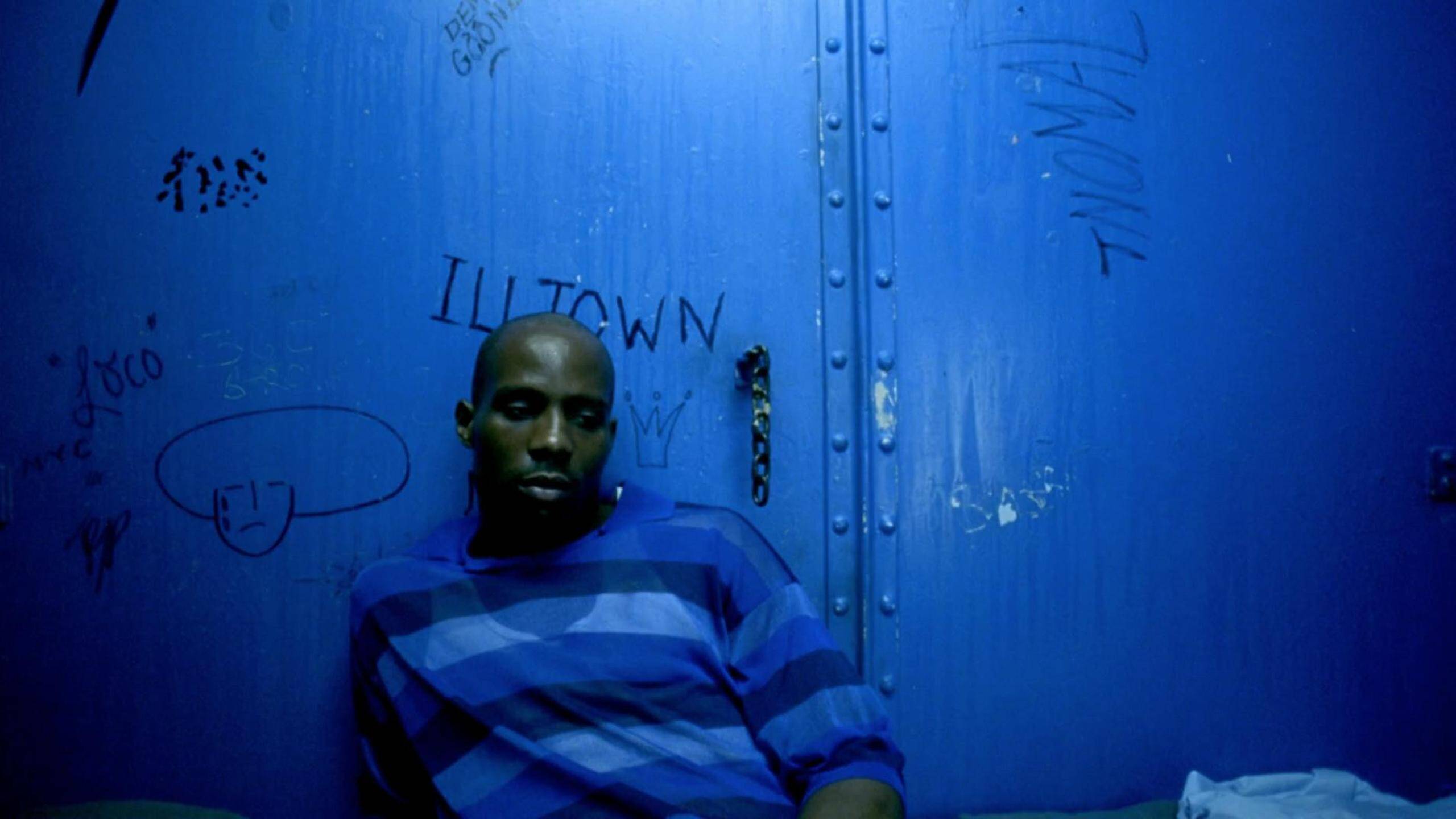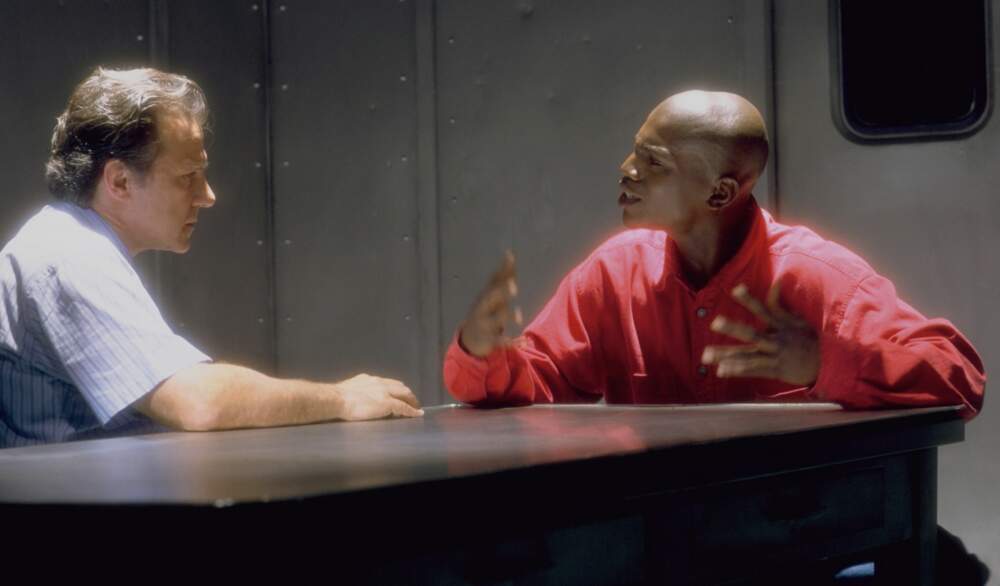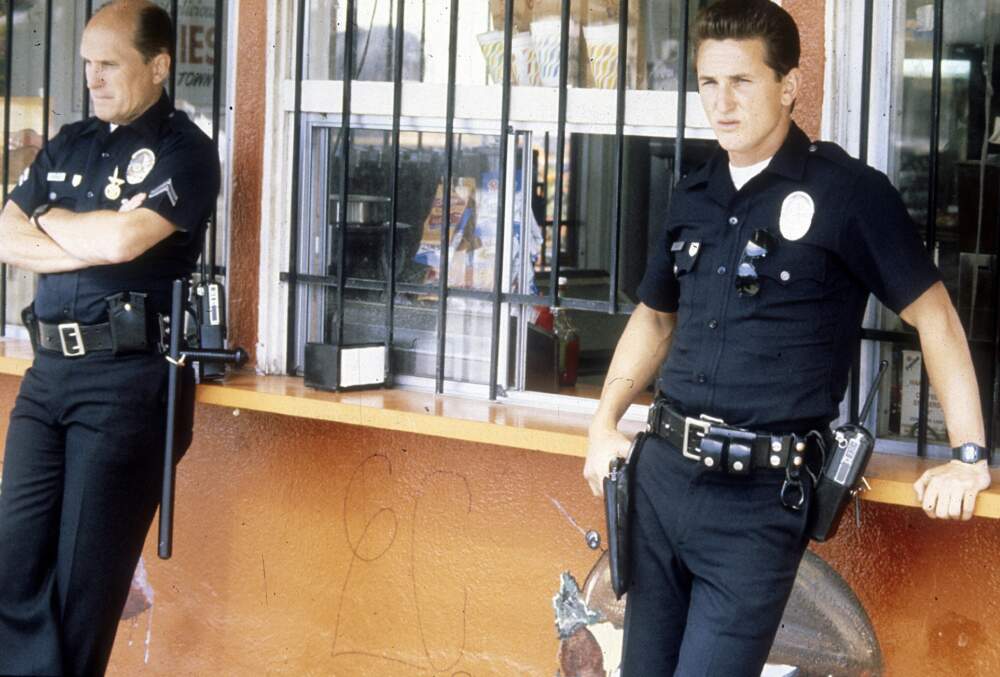Advertisement
The Coolidge celebrates 50 years of hip-hop with a 20-film series

Back in 1983, the Coolidge Corner Theatre was the first cinema outside of New York City to show “Wild Style,” the original (and some say still the best) hip-hop movie. However difficult it may be for many of us to believe that rap music has reached the age of AARP eligibility, the Coolidge has spent the month of August celebrating with “Been Here For Years: Hip-Hop at 50,” a 20-film screening series co-presented with MUBI, Harvard University’s Hip-Hop Archive and Research Institute and the Massachusetts Hip-Hop Archive. The wide-ranging program has included documentaries, concert films and even a midnight screening of “Cool as Ice,” Vanilla Ice’s ignominious stab at movie stardom. The series wraps up next Wednesday, Aug. 30, with writer-director-star Radha Blank presenting her sparkling 2020 debut, “The 40-Year-Old Version,” followed by a conversation with WBUR’s own Arielle Gray.
But before that, the Coolidge takes a dark detour with a week of gritty crime dramas, their familiar formulas revived via hip-hop beats. Spike Lee’s “Clockers,” Hype Williams’ “Belly,” Dennis Hopper’s “Colors” and Mario Van Peebles’ “New Jack City” might not have made many bids for originality in the story department, but all four of these films pulsate with street-level views of American life unseen in suburban multiplexes before the music of the cities started a pop culture revolution. Hip-hop helped reinvent the cops and robbers movie for the era of gangbangers and crack cocaine.
Adapted from Richard Price’s exhaustively researched bestseller, 1995’s “Clockers” is the most accomplished of the series and Spike Lee’s most sorrowful film. Opening with a montage of grisly crime scene photos, it’s a devastating depiction of a community poisoning itself. Set in a Brooklyn housing project that the camera leaves as rarely as the residents — these benches might as well be the center of the universe — the film stars Mekhi Phifer as a dealer rising in the ranks whose upstanding older brother (a heartbreaking Isaiah Washington) gets mixed up in a drug-related murder. Harvey Keitel gives one of his best performances as a burnt-out homicide cop who smells something fishy about the case and starts hounding the young pusher like a casually racist Javert.

Lee sometimes loses the threads of Price’s precise crime plotting, but he does right by the author’s tapestry of colorful characters, brought to life by a stunning supporting cast. This was during that golden era of the ‘90s when Delroy Lindo was doing something amazing in just about every other movie. In this one, he’s chilling as the neighborhood boss who never raises his voice because he doesn’t have to. Lee stock company regular Thomas Jefferson Byrd terrifies as an AIDS-infected streetcorner angel of death, while Michael Imperioli and John Turturro provide dark comic relief as rotten cops unencumbered by Keitel’s pesky moral concerns.
There’s not as much hip-hop in the movie as one might expect, with Lee giving most of the soundtrack over to Terence Blanchard’s plaintive trumpet score (and a preponderance of Seal, for some reason.) The filmmaker’s seething contempt for gangster archetypes radiates from the screen — which he’s packed with cartoonish parodies of malt liquor commercials, drive-by shooter video games and gaggles of children mimicking the macho mannerisms of their big brothers on the benches, to sometimes fatal ends. Cinematographer Malik Hassan Sayeed shoots it all on the grainy, reversal film stock that television news crews used in the ‘70s, further deglamorizing the images with a ragged, tabloid urgency.
Three years later, Sayeed brought a diametrically opposed, hyper-stylized, extravagantly glossy look to “Belly,” the first, and to date, the only film directed by music video legend Hype Williams. (And somehow still the last dramatic feature shot by Sayeed. For shame!) Starring Nas and DMX as absurdly wealthy New York City heroin dealers experiencing less-than-convincing spiritual awakenings, it’s an often astounding spectacle of a movie that doesn’t make a lick of sense, but that’s almost beside the point. This is the antithesis of “Clockers,” awash in ill-gotten luxury porn and the kind of badass posturing that turns Spike Lee’s stomach. Magic Johnson was so disgusted by the film he famously refused to book it at his theater chain.
Personally, I find “Belly” a pretty tough sit. Not for any moral reasons, but because the story is so difficult to follow and the acting is atrocious. Still, these rococo visuals are something to see, with Sayeed using lenses so wide they make car interiors look like stadiums and a gonzo opening heist at New York City’s notorious nightclub Tunnel that reportedly required half the movie’s budget. (Also, there are few things funnier for film buffs than the scene of Nas and his crew of killers kicking back to watch Harmony Korine’s grimy cult fetish item “Gummo” and staring slack-jawed at the television in disbelief.)

Well-meaning and inevitably antiquated, Dennis Hopper’s 1988 “Colors” boasts a couple of barn-burning turns by Sean Penn and Robert Duvall as uniformed LAPD officers in an anti-gang unit on patrol in South Central. The film is a strange mix of quasi-documentary realism (vividly shot on location by the legendary Haskell Wexler) and hoary ‘80s cop movie cliches, complete with mismatched partners, over-scaled car chases and silly explosions. Nineteen years after “Easy Rider,” the newly sober Hopper had become a Reagan Republican, and many fans were infuriated that a counterculture icon’s return to directing would be so sympathetic to a couple of white cops busting heads in minority neighborhoods.
Yet the film is more interestingly ambivalent than it appears on the surface, with the police department depicted as another gang not so dissimilar to the Crips and the Bloods, beholden to insular brotherhood rituals while fiercely staking out and protecting their turf. Penn’s bullheaded rookie even gets his own street name — Pac-Man! — and his performance is a tour de force of dim-bulb aggression. It’s easy to forget what an electrifying actor Penn used to be, especially opposite a revered mentor like Duvall. As someone who was sneaking into R-rated movies fairly regularly by then, I can attest that in 1988 the film’s depiction of police brutality felt bold and unflinching. Three years later, the Rodney King video made “Colors” look hopelessly over-generous and out of touch. The Ice-T theme song still rules, though.
Speaking of Ice-T, the rapper’s unlikely journey from bank-robbing pimp to your aunt’s favorite character on “Law and Order: SVU” began in earnest with 1991’s enormously entertaining “New Jack City.” A canny, commercially-minded remix of blaxploitation tropes and old Warner Bros. gangster movie cliches, writer-director Mario Van Peebles’ dazzling debut plays like a slicked-up MTV version of the previous year’s “King of New York,” except without all of Abel Ferrara’s muddy moral ambiguity. Ice-T stars as a street-smart cop (this seemed ironic at the time) on a task force dedicated to bringing down Wesley Snipes’ outrageously charismatic Nino Brown, a self-made crack kingpin who models himself on Al Pacino’s Tony Montana from “Scarface.”
By far, the most fun of the four films in the Coolidge’s hip-hop crime week, “New Jack City,” is shrewdly exaggerated with just enough old-fashioned movie make-believe to keep a story about a drug epidemic and urban decay from ever getting depressing. Melvin Van Peebles may have invented blaxploitation in 1971 with “Sweet Sweetback's Baadasssss Song,” but his son Mario figured out how to sell it to white shopping mall audiences. The movie is full of memorable turns by future superstars, not just Snipes, but also Chris Rock as the doomed snitch, Pookie. I mean, what else can one say about a film in which even Judd Nelson is an enjoyable presence?
There’s a line near the end of “New Jack City” when Ice-T expresses his desire to kill Snipes with such precise anatomical specificity, it’s worth a trip out to Brookline just to hear it with a crowd.
“Been Here For Years: Hip-Hop at 50” runs at the Coolidge Corner Theatre through Wednesday, Aug. 30
